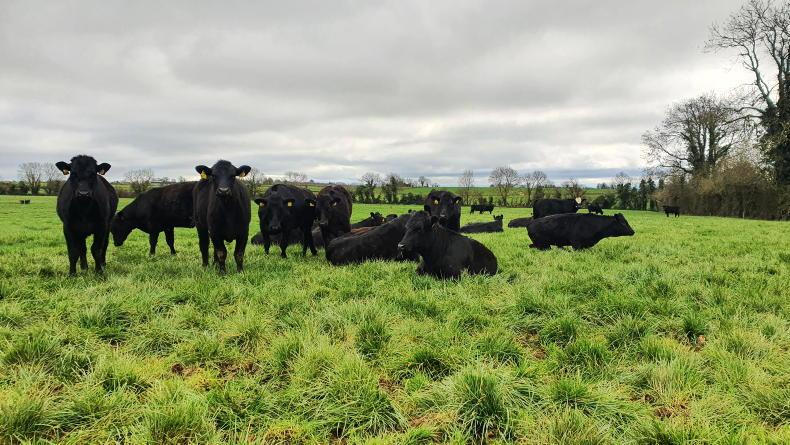Beef prices in Britain are on fire as retail demand keeps rising ahead of relaxation of COVID-19 rules in Britain, but there is little sign of this filtering out to price increases for Irish farmers.
A gap of €300-plus per head has developed based on last week’s reported prices for the R3 steer grade, excluding VAT.
This is also in spite of sterling strengthening to 86p=€1 compared with over 90p=€1 for much of the past year.
Prices compared
As Figure 1 illustrates, there is a gap in Irish prices for R3 steers compared with Britain of 83c/kg.
The British average price is equal to the equivalent of €4.63/kg for week ending 19 March compared with the Irish price of €3.80/kg, all excluding VAT.
Elsewhere in the world, prices continue exceptionally high in Australia at the equivalent of €4.48/kg due to scarcity of cattle for slaughter with ongoing herd rebuilding.
In the USA, steer prices average the equivalent of €3.39/kg based on a 60% kill-out.
New Zealand continues to have the weakest beef price of major beef trading nations at the equivalent of €2.75/kg.
Australia and the USA are the world’s second- and third-largest exporters of beef, exporting over 1m tonnes carcase weight equivalent (CWE) each out of the 10.5m tonnes traded annually.
The biggest exporter Brazil exports over 2m tonnes CWE annually and developments in that market have a particular impact on the global beef trade.
Brazil outlook
The cattle kill actually fell last year despite record exports of beef.
This was because of a decline in domestic consumption, which is predicted to be reversed this year, making less beef available for export.
If this materialises, it will be particularly good news for the value of Irish beef, as there will be less global supply from both Brazil and Australia.
It is also worth noting the change in Brazilian prices over the past year.
In May 2020, they were at BRL12.60/kg in their own currency, the real.
This week, this price has risen to BRL20.40/kg, a massive surge, which is the equivalent of €3.06/kg.
It would be dramatically higher again in euro, but for the fact that the value of the Brazilian real has fallen so much over the past year, from €1=BRL5.48 to €1=BRL6.64 this week.
Value of Irish beef
With the gap between the Irish and British slightly more than the gap between the Irish and Brazilian prices, it is clear that Irish farmers aren’t getting value from the British market that they would hope for.
If the current British market doesn’t drive Irish prices up, what can do?
The European market remains weak, with COVID-19 likely to delay reopening of hospitality and retail there too focused on national offering.
That leaves the wider world market. With it looking like less supply from Brazil and Australia, along with continued increased demand from China, global prices in the later part of this year could get more interesting.
Ireland’s return to negligible BSE risk should also finally get Irish beef back into China.
This is the one meaningful international market with serious growth potential and two of the big suppliers, Australia and Brazil, are likely to have less beef available in 2021.
Reopening of China and a resurgent hospitality sector in the UK and Europe would create market opportunities in a global market with tighter supply.
If all of this comes together, then the value of Irish beef would have to increase.






 This is a subscriber-only article
This is a subscriber-only article











SHARING OPTIONS: